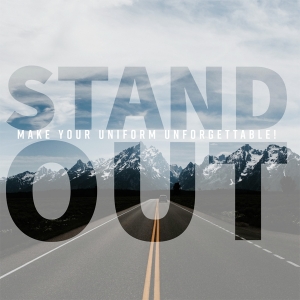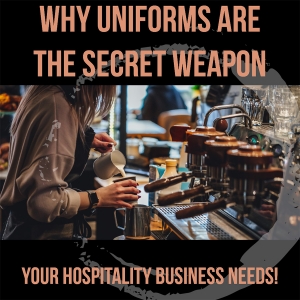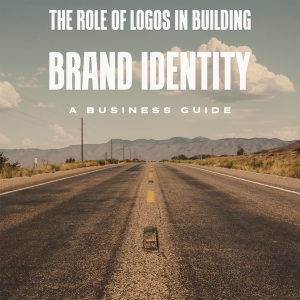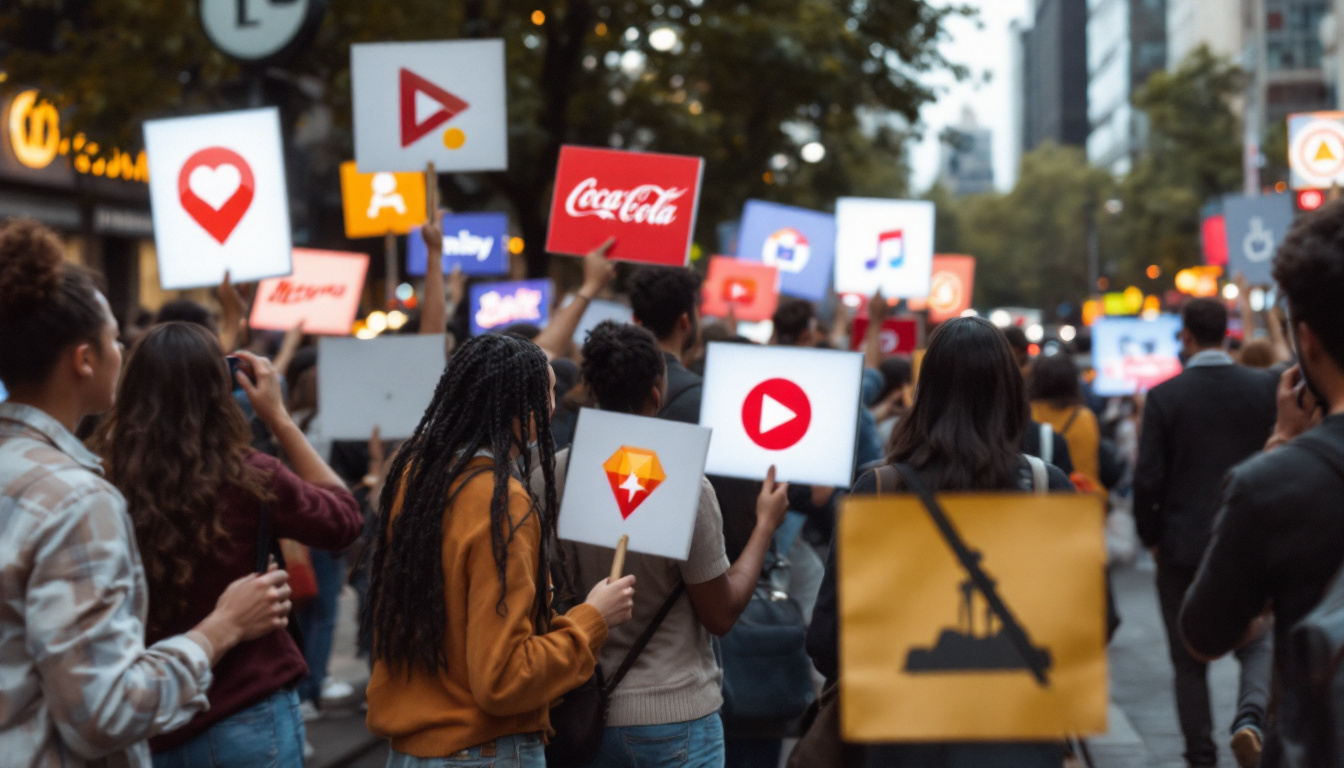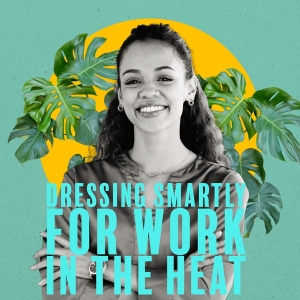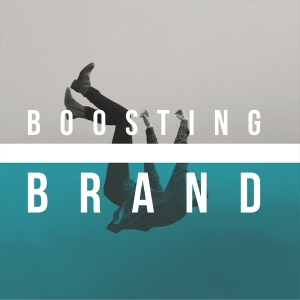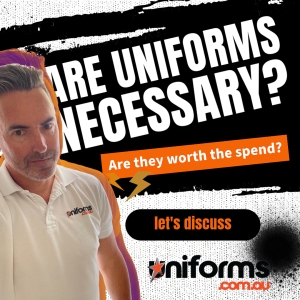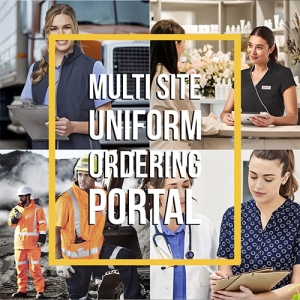Improving your website's SEO and achieving higher rankings on Google involves several key strategies
Improving your website's SEO and achieving higher rankings on Google involves several key strategies:
-
Align Content with Search Intent: Ensure your content matches what users are seeking. Analyze top-ranking pages for your target keywords to understand the type of content Google favors for those queries.
-
Optimize On-Page Elements: Incorporate your target keywords naturally into critical areas such as the title tag, meta description, headers, and throughout the content. This helps search engines understand the relevance of your page to specific queries.
-
Enhance User Experience (UX): A well-structured, mobile-friendly website with fast loading times and easy navigation keeps users engaged, reducing bounce rates and signaling to Google that your site provides value.
-
Build High-Quality Backlinks: Earning links from reputable websites acts as a vote of confidence, indicating to search engines that your content is trustworthy and authoritative.
-
Regularly Update and Optimize Content: Keep your content fresh and relevant by updating existing pages and adding new information. Regular audits to remove or improve low-performing content can also boost overall site quality.
By focusing on these areas, you can enhance your website's visibility and performance in search engine results.
Use These Simple Hacks to Make Your Uniform Unforgettable!

Discover effective strategies to elevate your uniform brand's identity and make a lasting impression.
Use These Simple Hacks to Make Your Uniform Unforgettable!
A strong uniform branding strategy can significantly elevate an organization's identity and recognition. In this article, we’ll explore various hacks and strategies to ensure your uniform brand remains unforgettable. Let’s delve into the importance of uniforms, the power of simplicity, and practical tips for enhancing your brand.
Understanding the Importance of a Memorable Uniform Brand
The significance of a memorable uniform brand cannot be overstated. It not only represents your company’s vision and values but also serves as a pivotal tool for recognition in a crowded marketplace.
Uniforms play a crucial role in branding by visually conveying the essence of an organization. When employees wear uniforms, they become walking advertisements, showcasing the brand’s identity to customers and the public.
A well-designed uniform aligns with the company's mission, creating a cohesive image that resonates with customers. It eliminates ambiguity, giving a professional appearance that builds trust and loyalty. Furthermore, uniforms can enhance team spirit and unity among employees, fostering a sense of belonging and pride in their work. This internal camaraderie often translates into improved customer service, as employees who feel connected to their brand are more likely to engage positively with customers.
Why Unforgettable Brands Matter
Unforgettable brands are essential for standing out in a competitive landscape. Such brands tend to foster a deep emotional connection with their audience, promoting customer loyalty and repeat business.
Moreover, memorable branding can lead to word-of-mouth referrals, which are both cost-effective and powerful in promoting a brand. When a uniform brand is unforgettable, it creates lasting impressions in the minds of customers, enhancing visibility. This visibility is particularly important in industries where competition is fierce; a unique uniform can become a distinguishing factor that sets a company apart. Additionally, memorable brands often leverage storytelling in their marketing, weaving narratives around their uniforms that resonate with customers on a personal level, thereby deepening their emotional investment in the brand.
The Power of Simplicity in Branding
Simplicity is a potent tool in the world of branding. A simple design can lead to higher recognition rates and easier recall for customers, making it an effective strategy for uniform branding.
Breaking Down the Concept of Simplicity
Simplicity doesn’t mean being bland; rather, it emphasizes clarity and ease of understanding. Uniforms should be designed to convey messages effortlessly, ensuring that viewers grasp their significance at a glance.
Opting for clean lines, minimalistic designs, and straightforward messaging can significantly enhance the impact of a uniform, making it more relatable and memorable. This approach not only helps in creating a cohesive visual identity but also allows brands to communicate their values and mission succinctly. For instance, a healthcare provider might choose crisp white uniforms to evoke a sense of cleanliness and professionalism, while a tech company could opt for sleek, modern designs that reflect innovation and forward-thinking.
How Simplicity Translates to Memorability
Memorable brands often have uncomplicated logos, straightforward color schemes, and clear communication. When these elements are applied to uniform design, they increase the likelihood of being remembered.
A streamlined approach to uniform branding enables customers to associate the uniform with a specific experience, product, or service, enhancing the overall recognition of the brand over time. Furthermore, the psychological impact of simplicity cannot be overlooked; research has shown that consumers are more likely to trust and engage with brands that present themselves in a clear and uncomplicated manner. This trust can lead to customer loyalty, as individuals feel more confident in their choices when they can easily understand what a brand stands for and what it offers. In a world saturated with information, a simple yet effective uniform can cut through the noise, leaving a lasting impression that resonates with customers long after their initial encounter.
Hacks to Enhance Your Uniform Brand
There are simple yet effective hacks you can implement to enhance your uniform brand. These strategies focus on visual appeal and functionality that resonate with your audience.

Selecting the Right Colors and Patterns
The choice of colors and patterns plays a pivotal role in branding. Research shows that colors can evoke particular emotions and perceptions; thus, selecting the right palette can significantly affect how your brand is perceived.
Consider your target audience and the message you wish to convey. Whether you opt for vibrant colors or subdued tones, ensure they align with your brand identity and resonate with the image you want to portray. For instance, a healthcare brand may benefit from calming blues and greens that evoke trust and tranquility, while a sports brand might choose energetic reds and yellows to inspire enthusiasm and action. Patterns can also add a unique flair; stripes or checks can convey a sense of tradition, while abstract designs may suggest innovation and modernity.
Incorporating Your Logo Effectively
Your logo is your brand's signature, so it’s essential to incorporate it effectively into your uniform design. Positioning your logo prominently on uniforms increases visibility and aids in brand recognition.
When designing uniforms, balance is key. The logo should not overpower the overall design but should be visible enough to catch the eye and stay in the memory of those who see it. Additionally, consider the placement of your logo—whether it’s on the chest, sleeve, or even the back of the uniform. Each position can convey different messages about your brand's approachability and professionalism. Moreover, think about the size and style of the logo; a bold, modern logo might suit a tech company, while a more traditional font could be appropriate for a law firm.
Choosing the Right Material and Design
Material quality matters not only for comfort but also for durability and aesthetics. Selecting high-quality fabrics can enhance the overall look and feel of uniforms, making them more appealing to both employees and customers.
Furthermore, the design should cater to the practicality of the role. For instance, uniforms for service staff may require different features compared to those worn by office personnel. Ensuring that designs are functional enhances employee satisfaction and contributes to a unified brand image. Consider incorporating features like moisture-wicking fabrics for outdoor staff or breathable materials for those in high-temperature environments. Additionally, offering customizable options, such as adjustable fits or pockets tailored for specific tools, can further enhance the usability of uniforms, making employees feel valued and comfortable in their attire. This attention to detail not only boosts morale but also reflects positively on your brand's commitment to quality and employee welfare.
Maintaining Consistency Across All Uniforms
Consistency is vital in uniform branding as it reinforces brand identity and recognition. Ensuring that all uniforms across different departments or locations maintain a unified look helps bolster the brand’s message.

The Importance of Uniformity in Branding
Uniformity in branding creates a coherent visual experience for customers. It minimizes confusion and conveys a sense of professionalism that customers appreciate.
When uniforms across your organization look similar, it reinforces a collective identity and highlights teamwork. This can be particularly effective for organizations with multiple locations, ensuring customers have a consistent experience regardless of where they interact with the brand. Additionally, a cohesive uniform can instill a sense of pride among employees, as they feel part of a larger mission and vision that transcends individual roles. This shared identity can enhance employee morale and motivation, ultimately leading to improved customer service and satisfaction.
Strategies for Ensuring Consistency
To achieve consistency, consider establishing brand guidelines that outline the specifics of uniform design, including colors, materials, logos, and styles. Having these guidelines in place can help maintain uniformity, regardless of who is designing or ordering uniforms.
Regular audits and feedback mechanisms can also help identify deviations from the established brand standards, ensuring that any inconsistencies are addressed promptly. Furthermore, involving employees in the uniform selection process can foster a sense of ownership and commitment to the brand. By gathering input on comfort and functionality, organizations can create uniforms that not only look good but also meet the practical needs of their staff. This collaborative approach not only enhances adherence to uniform standards but also promotes a positive workplace culture where employees feel valued and heard.
Measuring the Impact of Your Uniform Brand
Last but not least, measuring the impact of your uniform brand is essential for nurturing its growth and adaptability. Gathering feedback helps ensure that your brand remains relevant and effective in the eyes of your audience.
Key Performance Indicators for Brand Recognition
Identifying key performance indicators (KPIs) related to brand recognition can guide your evaluation efforts. Metrics such as customer recall rates, brand affinity scores, and social media engagement can provide valuable insights.
Consider conducting surveys or utilizing analytics tools to gauge public perception of your uniform brand. This data can drive informed decisions about design and branding strategies moving forward.
Evaluating and Adapting Your Brand Strategy
Finally, it’s crucial to evaluate your branding strategy periodically. As trends and preferences change, being adaptable ensures your brand does not become outdated.
Gathering feedback, analyzing performance, and being willing to make adjustments are fundamental practices to keep your uniform brand fresh and unforgettable. Don’t shy away from experimenting with new designs or concepts based on the insights you gather.
In conclusion, implementing these simple hacks will not only strengthen your uniform brand but will make it unforgettable. Embrace the power of simplicity, consistency, and adaptability, and watch as your brand gains recognition and loyalty in a competitive landscape.
The Role of Uniforms in BrandingWhy Uniforms Are the Secret Weapon Your Hospitality Business Needs!

Discover how uniforms can transform your hospitality business by boosting brand identity, enhancing team cohesion, and elevating customer experience.
Why Uniforms Are the Secret Weapon Your Hospitality Business Needs!
In the competitive landscape of the hospitality industry, every detail matters. From the ambiance of your establishment to the quality of service provided, these factors contribute significantly to your business's success. One often-overlooked aspect that can enhance your brand's identity and customer experience is the implementation of uniforms. In this article, we will explore why uniforms are a secret weapon for your hospitality business, detailing their importance, benefits, and best practices for implementation.
Understanding the Importance of Uniforms in Hospitality
Uniforms play an essential role in the hospitality sector, serving as a visual representation of your brand and setting the first impression for your customers. They offer not only function but also a sense of belonging and professionalism.
Defining the Role of Uniforms in Hospitality
Uniforms serve multiple roles within a business. They help define the staff's roles and responsibilities, while also promoting a consistent image throughout the organization. This not only enhances customer recognition of different service areas but also instills pride among employees wearing the uniform, thus boosting overall morale.
Furthermore, uniforms serve as a tool for security, identifying staff members and differentiating them from guests. This is particularly essential in busy establishments where customer inquiries abound and timely assistance is required. The design of uniforms can also reflect the unique culture of the establishment, whether it be a formal dining experience or a casual café, thereby reinforcing the brand's identity.
The Psychological Impact of Uniforms on Employees and Customers
The impact of uniforms extends beyond mere aesthetics. Studies suggest that wearing a uniform can significantly influence employee behavior and customer perceptions. Employees in uniform often exhibit a greater sense of responsibility and professionalism, as the attire can instill a feeling of purpose.
For customers, uniforms can convey trust and reliability, attributes that are especially important in hospitality. A well-identified staff member wearing a neat uniform reassures customers that they are in capable hands, ultimately enhancing their overall experience. Additionally, uniforms can foster a sense of community among staff, as they all share a common identity, which can lead to improved teamwork and collaboration. This collective spirit can be particularly beneficial during peak hours when efficient service is crucial.
Moreover, the choice of fabric and design in uniforms can also play a role in comfort and functionality, which is vital in a fast-paced environment. Breathable materials can help employees stay cool during busy shifts, while practical features such as pockets and easy-to-clean fabrics can enhance their ability to perform tasks efficiently. By investing in well-designed uniforms, hospitality businesses not only enhance their image but also support their employees' well-being and productivity.
The Benefits of Implementing Uniforms in Your Business
Adopting uniform policies in your hospitality business can offer numerous advantages, significantly improving both your internal dynamics and customer interactions. The following benefits underline why this practice should be prioritized.
Enhancing Brand Identity Through Uniforms
Your uniform is more than just clothing; it is an extension of your brand's identity. A well-designed uniform reflects your company’s values, culture, and aesthetic. Consistency in uniforms can increase brand recognition and help create a cohesive experience for your customers.
When customers associate your uniforms with quality and service, it reinforces brand loyalty. This connection encourages repeat visits, navigating your establishment toward a more robust market presence. Furthermore, uniforms can be tailored to align with seasonal themes or special events, allowing your brand to stay relevant and engaging. For instance, a hotel might incorporate festive colors during the holiday season, creating a warm and inviting atmosphere that resonates with guests.
Promoting Team Spirit and Equality
Uniforms promote a sense of team spirit and equality among staff members. When everyone adheres to a similar dress code, it diminishes any social or economic divides that may exist outside of the workplace. This equal footing fosters collaboration and encourages a teamwork-oriented atmosphere.
Moreover, it reduces competition over fashion choices and personal expression that could create distraction or division within your team. A shared uniform promotes unity, making staff feel like they are part of something larger. This sense of belonging can lead to increased job satisfaction and employee retention, as team members are more likely to feel valued and connected to their colleagues. Regular team-building activities, complemented by the uniform, can further enhance this camaraderie, reinforcing the idea that everyone is working towards a common goal.
Ensuring Hygiene and Safety Standards
In the hospitality industry, hygiene and safety are non-negotiable. Uniforms contribute to these standards by minimizing the risk of contamination and accidents. Well-designed uniforms can be made from materials that are easy to clean and maintain, ensuring that your staff looks presentable at all times.
Additionally, uniforms can include safety features, such as non-slip shoes for restaurant staff or easily identifiable names and roles for others. This not only promotes professionalism but also enhances customer safety and confidence. Furthermore, incorporating elements such as aprons with pockets for tools or utensils can streamline service efficiency, allowing employees to perform their tasks with ease and confidence. By prioritizing both functionality and safety in uniform design, businesses can create an environment where employees feel empowered to deliver exceptional service while adhering to hygiene protocols.
Choosing the Right Uniforms for Your Hospitality Business
The journey of implementing uniforms doesn't end with deciding to have them. Choosing the right uniforms tailored to your business needs is crucial in order to reap the full benefits outlined previously.
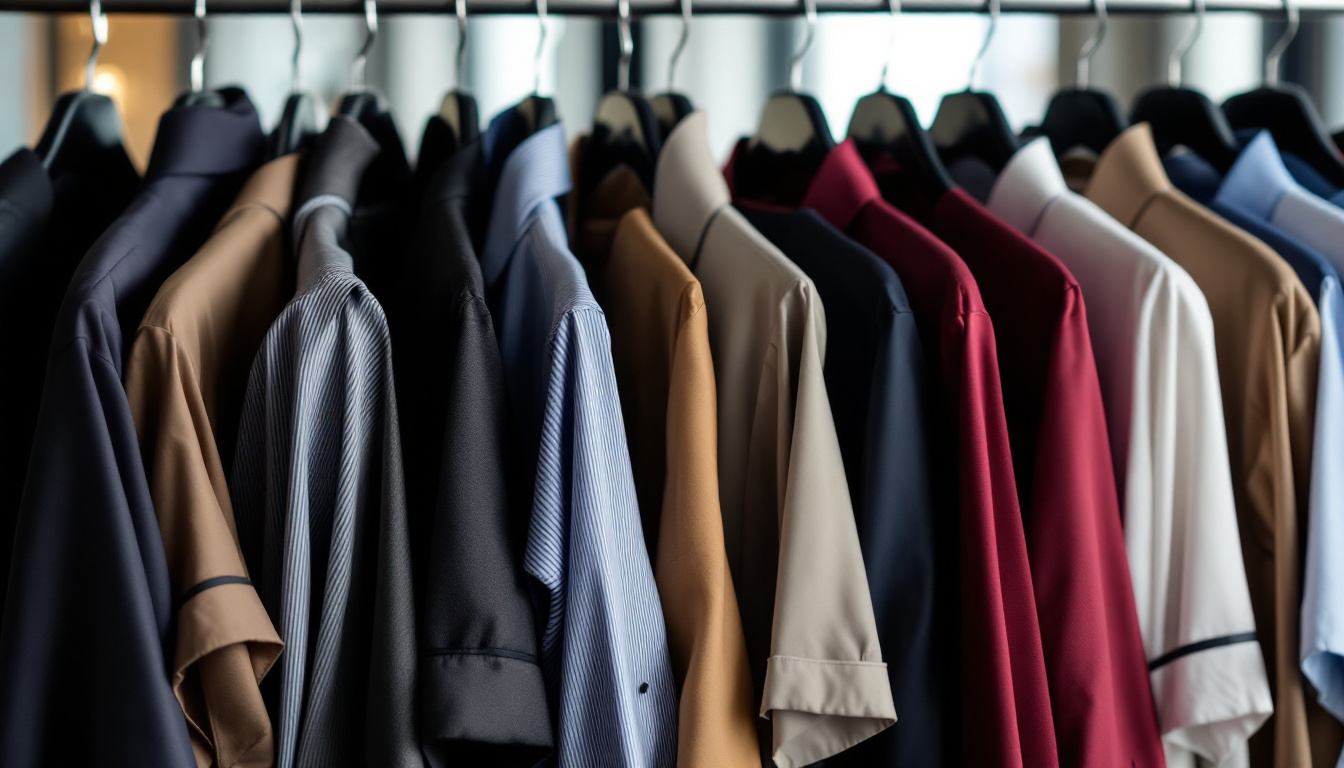
Factors to Consider When Selecting Uniforms
When selecting uniforms, several factors require consideration:
- Brand Alignment: The uniform should align with your brand image and values.
- Comfort: Ensure that employees can perform their duties effectively while wearing the uniform.
- Durability: Choose materials that withstand the rigors of hospitality work.
- Versatility: Consider how uniforms may adapt to different roles within the business.
By carefully choosing your materials and styles, you can significantly affect employee satisfaction and customer perceptions. Furthermore, uniforms can serve as a powerful marketing tool, subtly reinforcing your brand identity every time an employee interacts with a guest. A well-designed uniform can communicate professionalism and attention to detail, which are essential in the hospitality industry.
Balancing Comfort and Style in Uniform Design
A common dilemma in choosing uniforms is striking a balance between comfort and style. Staff members will perform better if they feel comfortable in what they are wearing. Therefore, opting for breathable fabrics and practical designs can lead to enhanced performance and fewer complaints.
Simultaneously, uniforms should also reflect style and professionalism. Simple, elegant designs that incorporate your color scheme and logo can effortlessly blend form and function. Involving staff in the design process can also garner their buy-in and encourage pride in what they wear. Additionally, consider seasonal variations in your uniform design; lighter fabrics for summer and layering options for winter can keep employees comfortable year-round, while also maintaining a cohesive look that reflects your brand’s commitment to quality and care.
Moreover, the choice of accessories can elevate the overall uniform aesthetic. Items such as ties, scarves, or hats can add a touch of flair and individuality while still adhering to the overall uniform guidelines. These accessories can be rotated or updated with trends, allowing your staff to feel fresh and fashionable without a complete overhaul of the uniform. This approach not only enhances employee morale but also keeps the brand image dynamic and engaging for returning customers.
Implementing Uniform Policies in Your Business
Once you've decided on uniforms, the next step is implementing uniform policies within your business. This stage is crucial for ensuring everyone understands and accepts the transition.

Communicating the Importance of Uniforms to Your Staff
Successful implementation begins with transparent communication. Staff members should understand the rationale for uniforms and how it aligns with business goals. Holding meetings and discussions can encourage acceptance and feedback, allowing employees to voice concerns or suggestions.
Training sessions that emphasize the benefits of uniforms can further reinforce their importance, making staff members feel appreciated and pivotal to the brand’s success.
Enforcing Uniform Policies Without Affecting Employee Morale
While enforcing uniform policies is essential, it's equally important to maintain employee morale. Being rigid can lead to dissatisfaction and pushback. Create a balanced approach, incorporating flexibility in terms of fit and comfort. Consider exceptions for specific scenarios, ensuring that compliance does not feel punitive.
Recognizing and celebrating employees who embody the spirit of the uniform can also foster a positive work environment, encouraging others to follow suit.
Evaluating the Impact of Uniforms on Your Business
The final step in this process involves evaluating how uniforms have influenced both your business and employee dynamics. This reflection will help inform future practices and any necessary adjustments.

Measuring Customer Perception Post-Uniform Implementation
Post-implementation, it's imperative to gather feedback from customers regarding their impressions of staff in uniforms. Conduct surveys, observe customer interactions, and even engage with customers directly to gauge their thoughts.
Increased customer engagement and positive feedback are indicators that the uniform policy has had a favorable impact. This information can guide potential alterations if needed.
Assessing Employee Satisfaction and Productivity Levels
Lastly, evaluate how the staff feels about the uniforms. High levels of satisfaction usually correlate with increased productivity. Regular check-ins and anonymous surveys can provide insights into how employees perceive their uniforms and their influence on their work ethic.
With adequate assessment and adjustments based on feedback, you can maximize the benefits of uniforms in your hospitality business.
In conclusion, uniforms are indeed a secret weapon in the hospitality industry. By understanding their importance, implementing effective policies, and continuously evaluating their impact, you can transform your business landscape for the better.
3 Urgent Reasons Your Business Needs to Invest in Promotional Products Now
Discover why investing in promotional products is crucial for your business's growth and success.
3 Urgent Reasons Your Business Needs to Invest in Promotional Products Now
In today's competitive marketplace, businesses constantly seek ways to stand out and connect with their target audience. One powerful yet often underestimated tool is promotional products. This article explores three urgent reasons why investing in promotional products can benefit your business profoundly.
Understanding the Power of Promotional Products
Promotional products serve a critical function in marketing strategies across various industries. By providing tangible items that carry your brand identity, you create an opportunity for exposure beyond traditional advertisement methods.
The core of their effectiveness lies in how they integrate into consumers' daily lives. When customers receive a pen, tote bag, or water bottle emblazoned with your logo, it not only reminds them of your business but also creates a lasting impression that can lead to customer loyalty. These items often become part of the recipient's routine, whether it's using a branded mug at the office or carrying a promotional backpack while commuting. This constant visibility reinforces brand recognition and can lead to word-of-mouth referrals, as others see the product in use.
The Role of Promotional Products in Marketing
Promotional products are a unique way to get your brand noticed. Unlike digital ads that can be skipped or ignored, physical items demand attention. They can serve multiple purposes: as a branding tool, a marketing strategy, and a communication device.
Combining creativity with utility can produce strong results. Items that people use regularly inherently keep your brand top of mind, reinforcing your presence in a subtle, yet impactful way. For instance, a high-quality notebook given at a conference not only showcases your brand but also provides value to the recipient, making them more likely to remember your company. Additionally, seasonal or themed promotional products can create a sense of urgency and excitement, encouraging consumers to engage with your brand during specific times of the year, such as holidays or back-to-school seasons.
The Psychological Impact of Promotional Products
The psychology behind promotional products highlights their ability to evoke emotions and create connections. When a customer receives a gift, even if it is small, it fosters feelings of goodwill and trust towards your brand.
Furthermore, the reciprocity principle suggests that when someone receives something for free, they feel a natural inclination to return the favor. This can translate to increased sales, brand loyalty, and a positive brand image. Additionally, promotional products can enhance customer engagement by providing a tangible representation of your brand's values and mission. For example, eco-friendly products not only promote your brand but also resonate with environmentally conscious consumers, creating a deeper emotional connection. This alignment of values can lead to stronger customer relationships and a community of advocates who are more likely to share their positive experiences with others.
Reason 1: Boosting Brand Recognition
Brand recognition is crucial for any business aiming to thrive. When consumers can instantly recognize your brand, they are more likely to choose your products or services over competitors.

Promotional products help in achieving this recognition. The more often potential customers see your logo on useful items in varied settings, the more familiar they become with your brand, leading to higher recall rates when they make purchasing decisions.
The Connection Between Promotional Products and Brand Awareness
Statistics reveal a strong correlation between promotional products and brand awareness. Research indicates that approximately 79% of people can recall the branding on a promotional product they received in the past two years. This high recall rate underscores the effectiveness of these items in not just reaching, but resonating with audiences.
When strategically distributed, promotional products elevate your brand’s visibility. Events such as trade shows, conferences, or community activities provide ideal settings to showcase your items, reaching a targeted audience while enhancing brand awareness. Additionally, the tactile nature of promotional products creates a physical connection between consumers and your brand, making the experience more memorable. Items like branded tote bags or water bottles can become a part of daily routines, ensuring your brand remains top-of-mind long after the initial interaction.
How Promotional Products Enhance Brand Image
The right promotional products can directly reflect the values and quality of your brand. For instance, eco-friendly materials demonstrate corporate social responsibility, appealing to environmentally conscious consumers.
Moreover, high-quality and innovative promotional items suggest excellence. When consumers associate quality with your brand, it can elevate your business status and attract more clients. This perception is further reinforced when promotional products are not just practical but also stylish and trendy. For example, tech gadgets such as wireless chargers or stylish notebooks can position your brand as modern and forward-thinking, appealing to a younger demographic that values innovation. By carefully selecting promotional items that align with your brand ethos, you can create a lasting impression that resonates deeply with your target audience.
Reason 2: Cost-Effective Marketing Strategy
In a world where marketing budgets can spiral out of control, promotional products emerge as a cost-effective choice. Their affordability and long-term usability allow businesses to maximize their marketing investment.
Essentially, promotional products provide more impressions per dollar than traditional advertising channels. This means every dollar spent goes further in terms of brand exposure.
Comparing the Cost of Promotional Products to Other Marketing Methods
When you evaluate the cost-effectiveness of promotional products against other forms of advertising, the difference is clear. For instance, television ads can require substantial investments for limited air time. In contrast, a single promotional product can generate years of advertising as it circulates among users.
Moreover, digital ads often disappear after the campaign ends. Promotional products, on the other hand, can continue promoting your brand long after they are distributed, leading to prolonged value from each item. This enduring presence in the consumer's life can lead to increased brand loyalty, as recipients often associate the product with positive experiences or memories tied to your brand.
The Long-Term Value of Promotional Products
Unlike fleeting advertisements, promotional products have a solid long-term impact. Items such as calendars or apparel can last for years, continually serving as a reminder of your brand.
This longevity reinforces your branding efforts and creates ongoing consumer engagement. Businesses that understand this value are more likely to see a return on their investment over time, potentially leading to sustained growth. Furthermore, the emotional connection formed through the use of well-designed promotional products can enhance customer relationships, making recipients feel valued and appreciated. This connection can result in word-of-mouth referrals, which are invaluable in expanding your customer base without incurring additional marketing costs.
Additionally, the versatility of promotional products allows businesses to tailor their offerings to specific target audiences. For example, tech companies may find success with branded USB drives or phone accessories, while health and wellness brands might opt for reusable water bottles or fitness gear. By aligning the promotional items with the interests and needs of their audience, businesses can further increase the effectiveness of their marketing strategy, ensuring that their investment yields the best possible results.
Reason 3: Increased Customer Loyalty and Retention
Customer loyalty is crucial for maintaining a steady revenue stream. Satisfied customers are more likely to return for repeat business and refer your brand to others.
Promotional products play a pivotal role in nurturing this loyalty. When customers feel appreciated, they are more inclined to maintain a relationship with your brand.
Promotional Products as Tokens of Appreciation
Giving gifts to customers is a proven strategy for enhancing relationships. Promotional products act as tokens of appreciation, fostering a sense of connection between your business and its customers.
Such gestures can make customers feel valued, ultimately influencing their likelihood of returning for future purchases. Furthermore, when customers receive something for free, they have a favorable view of the business that provided it.
How Promotional Products Encourage Repeat Business
Reinforcing positive experiences prompts customers to return. By distributing promotional products with each purchase, businesses can encourage patrons to come back. For example, a coffee shop giving away branded mugs creates an ongoing association and nudges repeat visits.
Additionally, promotional products can act as incentives during special promotions or loyalty programs, capturing the interest of customers looking for bonuses tied to their purchases.
Making the Most of Your Promotional Products Investment
Investing in promotional products is a commendable step, but to maximize their effectiveness, it is essential to approach the process strategically. Understanding your target audience and clearly defining your goals will ensure your promotions resonate with your intended market.

Choosing the Right Promotional Products for Your Business
Selecting appropriate promotional products is vital. Consider your audience's demographics and preferences to ensure your items are appealing. Utility and creativity should also guide your choices. Products that offer daily use—like reusable bags or mugs—tend to be more effective than less functional items.
Ensure that whatever products you choose align with your brand image, as well. This alignment will strengthen the perception of your brand and aid in creating a cohesive marketing message.
Best Practices for Distributing Promotional Products
The approach to distributing promotional products can significantly influence their impact. Events, trade shows, or community outreach can serve as ideal platforms for distribution, enhancing visibility.
Personal interactions often yield the best responses, so consider hand-delivering products to customers or during networking opportunities. This strategy could lead to meaningful conversations that boost brand loyalty and awareness.
In conclusion, the investment in promotional products is not just a financial decision — it's a strategic marketing choice that can yield significant rewards for your business. By understanding their power, aligning them to boost brand recognition, harnessing their cost-effectiveness, and fostering customer loyalty, you can achieve lasting success in an ever-evolving marketplace.
The Role of Logos in Building Brand Identity
Explore how logos serve as powerful tools in establishing and enhancing brand identity.
The Role of Logos in Building Brand Identity
Logos play a crucial role in the world of branding. They serve as visual representations of a company, encapsulating its values, mission, and story in a single, symbolic graphic. This article delves into the multifaceted relationship between logos and brand identity, exploring how effective logo design can enhance a company’s presence in the marketplace and foster deep connections with its audience.
Understanding the Concept of Brand Identity
Brand identity encompasses the visual elements of a brand, including its logo, typography, colors, and overall design, and extends to its tone of voice and the values it represents. It is the culmination of how a brand communicates with the world, forming a cohesive image that influences perception and engagement.
Defining Brand Identity
At its core, brand identity is a combination of all aspects that make up a brand's personality. It is what distinguishes one brand from another in a crowded marketplace. A well-defined brand identity not only captures the essence of a brand but also resonates with its target audience, encouraging loyalty and recognition.
This identity is often crafted through a combination of design elements, messaging strategies, and customer interactions. Every touchpoint contributes to how consumers perceive and connect with a brand, making it essential for companies to curate their identity meticulously. For instance, a brand's website, social media presence, and even customer service interactions are all opportunities to reinforce its identity. This holistic approach ensures that every aspect of the brand experience aligns with the overall message and values the brand wishes to convey.
Importance of a Strong Brand Identity
A strong brand identity fosters trust and credibility, allowing consumers to feel more confident in their choices. It provides a sense of stability and consistency, which is crucial in today's rapidly changing market. Moreover, a compelling brand identity can significantly enhance customer loyalty, driving long-term business success.
In a saturated market, where choices abound, a unique brand identity helps differentiate a business from its competitors. This differentiation becomes even more powerful when combined with a thoughtfully designed logo, acting as a memorable symbol representing the brand’s mission and values. Furthermore, a strong brand identity can also facilitate emotional connections with consumers. When a brand successfully communicates its story and values, it can evoke feelings of nostalgia, aspiration, or even community, making customers more likely to advocate for the brand and share their experiences with others. This emotional resonance not only solidifies loyalty but also transforms customers into brand ambassadors, amplifying the brand's reach and impact in the marketplace.
The Power of Logos in Branding
Logos hold tremendous power in branding; they are often the first point of recognition for consumers. A well-designed logo captures attention and invokes feelings that can influence purchasing behavior and drive brand loyalty. In a crowded marketplace, where consumers are bombarded with countless options, a logo can serve as a beacon, guiding customers toward a brand they can trust and feel connected to. This initial recognition can lead to a deeper relationship with the brand, as consumers begin to associate the logo with positive experiences and quality products.
What Makes a Good Logo?
A good logo should be simple yet memorable, versatile yet relevant, and should effectively convey the brand’s essence. Simplicity allows for easy recognition, while uniqueness ensures that the logo stands out. Additionally, a logo must work across various platforms and sizes, from business cards to billboards. This versatility is crucial in today’s digital age, where logos must perform well in both print and online environments. A logo that can adapt to different contexts without losing its identity is invaluable for maintaining brand consistency.
Another critical aspect is relevance; a logo should resonate with the target audience and reflect the brand’s core values. For example, a logo for an eco-friendly brand might incorporate green hues and natural imagery to communicate its commitment to sustainability. Ultimately, the best logos often evoke emotion and create a lasting impression, making it essential for designers to prioritize these elements in their work. This emotional connection can turn casual consumers into loyal advocates, further amplifying the brand's reach through word-of-mouth and social sharing.
The Psychological Impact of Logos
Logos can evoke different emotions and associations, which can profoundly affect consumer behavior. For instance, colors play a significant role in how a logo is perceived; blue is often associated with trustworthiness, while red may invoke feelings of excitement or urgency. This understanding of color psychology is a powerful tool for brands looking to establish a specific identity in the minds of consumers. Brands like Facebook and Twitter utilize blue to convey reliability and security, while fast-food chains like McDonald's use red to stimulate appetite and create a sense of urgency.
Moreover, the shapes and symbols used in logo design can also convey specific messages. Circular logos might signal unity and wholeness, while sharp, angular shapes can signify strength and boldness. Understanding these psychological impacts can help businesses create logos that align with their branding objectives. For instance, a tech company might choose a sleek, modern logo with angular elements to suggest innovation and forward-thinking, while a wellness brand might opt for softer, rounded shapes to evoke feelings of comfort and care. By carefully considering these design choices, brands can create logos that not only attract attention but also resonate deeply with their intended audience, fostering a stronger connection and enhancing overall brand perception.
The Connection Between Logos and Brand Identity
The connection between logos and brand identity is intricate and symbiotic. Logos not only represent a brand but also embody its mission, vision, and values, tightly linking them to the overall identity of the business.
How Logos Communicate Brand Values
Through thoughtful design, logos can communicate a brand's values and aspirations effectively. For example, a sustainable brand might opt for earth tones and organic shapes to reflect its commitment to the environment. In this way, logos become more than just visuals; they narrate the story of the brand and communicate its purpose.
By aligning logo design with brand messaging, companies can reinforce their identity, ensuring that consumers not only recognize the logo but also connect with the underlying values it represents.
Logos and Brand Recognition
Effective logos are instrumental in building brand recognition. A logo that is consistent in its use across different platforms—be it social media, packaging, or advertising—helps elevate familiarity and aids in anchoring the brand in consumers' minds.
High brand recognition often leads to increased sales and customer loyalty. When customers can easily identify a brand's logo, they are more likely to choose it over competitors, highlighting the importance of a strategic logo design in a comprehensive branding strategy.
The Process of Logo Design for Brand Identity
The journey of logo design is a strategic process involving careful planning and creativity. It begins with understanding the brand’s core values, mission, and target audience, which set the foundation for effective logo creation.
Key Considerations in Logo Design
Several key considerations must be addressed during the logo design process. These include comprehending the core message of the brand, studying the target market, and analyzing competitors’ logos. By doing so, designers can create a logo that stands out and strongly resonates with the intended audience.
Additionally, it’s essential to anticipate how the logo will be used in various applications. A well-designed logo should seamlessly integrate into both digital platforms and traditional print materials, retaining its effectiveness across different media.
The Role of Color and Shape in Logo Design
Color and shape are fundamental elements of logo design, each carrying their meaning and impact. Colors evoke emotions and associations, while shapes create perceptions and convey messages about the brand's identity.
Choosing the right color palette requires a strong understanding of color psychology and the emotions the brand wishes to convey. Similarly, the choice of shape can largely influence how a brand is perceived—rounded shapes may suggest friendliness, while angular shapes can imply professionalism and strength.
Redesigning Logos While Maintaining Brand Identity
The dynamic nature of markets and consumer preferences often necessitates a logo redesign. However, this process must be approached with caution to ensure that the core essence of the brand identity remains intact.
When and Why to Consider a Logo Redesign
Brands may consider a redesign for various reasons, such as updates in branding strategy, mergers and acquisitions, or shifts in target demographics. Additionally, if a logo feels dated or does not align with current brand values, it can be time for a refresh.
Understanding the reasons behind a redesign aids in maintaining focus and ensuring that the new logo still connects with the established brand identity while appealing to modern sensibilities.
Preserving Brand Identity During a Logo Redesign
While new designs can inject energy into a brand, preserving elements of the existing logo, such as colors or shapes, can help maintain continuity for loyal customers. This seamless transition is vital for ensuring that consumers still recognize and connect with the brand they trust.
Engaging customers in the redesign process, through feedback or by showcasing concepts, can also facilitate buy-in and excitement for the new logo. Ensuring that the redesign aligns with the core values of the brand is essential for retaining the essence of the identity that consumers have come to appreciate.
In conclusion, logos are more than mere graphics; they are pivotal elements of brand identity that interact with consumers and drive loyalty. By understanding the intricacies of logo design and its relationship with brand identity, businesses can create impactful logos that resonate with their audience and establish a lasting presence in the market.
Dressing Smartly for Work in the Heat: A Guide for Female Professionals
Navigating summer heat while maintaining a professional appearance can be challenging for female professionals. Striking a balance between comfort and style is key to staying confident and productive. This guide offers practical tips and wardrobe insights to help you beat the heat while looking polished.
The Summer Office Style Challenge
Managing the summer heat in a professional setting requires thoughtful wardrobe planning. Overheating and wardrobe mishaps can impact confidence and focus. By choosing the right pieces, you can maintain a professional image without sacrificing comfort.
- Common wardrobe mishaps like sweat stains or ill-fitting outfits can undermine your confidence.
- Plan your wardrobe around breathable fabrics and versatile styles to stay cool and composed.
Essential Underwear Choices for Confidence
The foundation of a flawless outfit begins with your undergarments.
- Seamless and well-fitted options prevent visible lines and discomfort.
- Avoid visible straps by opting for convertible bras or strapless designs that complement your summer wardrobe.
Always Have a Cover-Up
Combat unpredictable office air conditioning with lightweight layers.
- Top recommendations: light blazers, cardigans, or scarves.
- These items provide a professional look while keeping you comfortable in chilly environments.
Footwear for Comfort and Elegance
Your shoes should offer a balance of comfort and professionalism.
- Opt for breathable flats made of high-quality materials to prevent overheating.
- When wearing sandals, ensure they are polished and workplace-appropriate.
- Maintain foot hygiene with regular pedicures and breathable insoles.
Balancing Casual and Corporate
Relaxed summer dress codes still require a professional touch.
- Follow proportion rules: balance sleeveless tops with midi skirts or tailored trousers.
- Avoid overly casual outfits by maintaining a polished appearance with structured pieces.
Finding the Perfect Length
Skirt length can significantly influence your office look.
- Knee-length or midi skirts are versatile and ideal for maintaining professionalism.
- Pair them with tailored tops for a cohesive outfit that transitions easily from meetings to after-work events.
Staying Sweat-Free and Comfortable
Don't let the heat dampen your day.
- Choose loose cuts and breathable fabrics like cotton or linen.
- Contrary to myths, light-colored fabrics are best for staying cool in the heat.
Fabrics That Work Best in Summer
The right materials can make all the difference.
- Look for linen, cotton blends, and other breathable textiles to ensure all-day comfort.
- Test fabrics for quality by checking their texture and weight.
Accessories That Add a Professional Touch
Elevate your summer outfits with thoughtful accessories.
- Lightweight jewelry, slim belts, and structured totes can enhance your appearance.
- Stick to minimalistic designs for a sophisticated touch.
Hair and Makeup Tips for Hot Weather
Keep your look fresh and polished despite the humidity.
- Professional hairstyles: low buns, sleek ponytails, or braided updos.
- Use sweat-proof makeup products like setting sprays and waterproof mascara for long-lasting results.
Embracing Patterns and Colors
Add vibrancy to your wardrobe with summer-appropriate patterns and hues.
- Patterns like stripes or small florals work well in corporate settings.
- Experiment with colors like pastels or jewel tones to maintain a professional yet approachable vibe.
Layering for Morning Chill and Afternoon Heat
Master smart layering to adapt to temperature changes.
- Invest in versatile pieces like sleeveless tops paired with blazers or shawls.
- Choose lightweight fabrics that allow for easy transitions throughout the day.
Quick Fixes for Unexpected Situations
Prepare for wardrobe emergencies with a mini office survival kit.
- Essentials include a stain remover pen, safety pins, and spare flats.
- A proactive approach ensures you're always prepared for the unexpected.
Sustainability and Ethical Choices
Support the planet while building a stylish wardrobe.
- Invest in sustainable, high-quality summer essentials that last.
- Look for brands committed to ethical practices in fashion.
Building a Capsule Summer Wardrobe
Simplify your mornings with a curated summer wardrobe.
- Include key staples like tailored trousers, breathable blouses, and versatile skirts.
- Create multiple outfits by mixing and matching these pieces, maximizing functionality and style.
Final Thoughts
Dressing smartly for work in the heat doesn’t have to be a challenge. By choosing breathable fabrics, versatile layers, and practical accessories, you can look professional and feel comfortable all summer long. Implement these tips to enhance your summer office style and stay confident at work.
How Uniforms Benefit Business: Boosting Brand Image and Productivity
Discover how implementing uniforms can enhance your business's brand image and boost productivity.
How Uniforms Benefit Business: Boosting Brand Image and Productivity
In today's competitive marketplace, businesses are constantly seeking ways to enhance their brand image and improve employee productivity. One effective yet often overlooked strategy is the implementation of uniforms. This article explores the various benefits of uniforms for businesses, from defining corporate identity to enhancing brand image and productivity.
Understanding the Importance of Uniforms in Business
Uniforms play a crucial role in defining a company's corporate identity. They not only serve as a visual representation of the business but also contribute to the overall culture of the organization. When employees wear uniforms, they become part of something larger than themselves, reinforcing the company’s values and mission.
Defining Corporate Identity through Uniforms
Uniforms help in creating a distinct corporate identity, making employees easily recognizable to customers. This can be particularly important in service-oriented sectors, such as hospitality and retail, where first impressions are vital. When customers see employees in uniforms, it connotes professionalism and reliability, reinforcing trust in the brand. Furthermore, uniforms can also serve as a marketing tool; they can be designed to reflect the brand’s color palette and logo, creating a cohesive visual experience for customers. This not only enhances brand recognition but also aids in creating a memorable customer experience, encouraging repeat business.
The Psychological Impact of Uniforms on Employees
Wearing uniforms can significantly affect employee morale and productivity. A well-designed uniform can instill a sense of pride in employees and foster a feeling of belonging to the organization. This psychological boost can lead to greater teamwork and cooperation, assisting in better overall performance. Additionally, uniforms can reduce the pressure of daily clothing choices, allowing employees to focus more on their work rather than their appearance. This can be particularly beneficial in fast-paced environments where time is of the essence. Moreover, uniforms can also help in leveling the playing field among employees, minimizing socioeconomic differences and promoting inclusivity within the workplace, which can further enhance team dynamics and collaboration.
Enhancing Brand Image with Uniforms
Uniforms serve as a powerful marketing tool for businesses. They not only present a professional image but also communicate the brand's values and ethos. Effective use of uniforms can elevate a brand's visibility and strengthen its image in the marketplace. In addition to their aesthetic appeal, uniforms can also foster a sense of belonging and team spirit among employees, which can translate into improved morale and productivity. When employees feel like they are part of a cohesive unit, they are more likely to embody the company's mission and values in their interactions with customers.
Uniforms as a Marketing Tool
A uniform can function as a walking advertisement for the brand. When employees wear uniforms emblazoned with the company logo and colors, they serve as brand ambassadors, promoting the business wherever they go. This exposure can help attract new customers and reinforce loyalty among existing ones. Furthermore, uniforms can be strategically designed to reflect seasonal promotions or special events, allowing businesses to adapt their branding dynamically and keep the public engaged. By incorporating unique design elements or limited-edition uniforms, companies can create buzz and excitement around their brand, further enhancing visibility in a competitive market.
Creating a Cohesive Brand Image
A cohesive brand image is essential for gaining and retaining market share. Uniforms create a unified look among employees, ensuring consistency in brand representation. This cohesion strengthens brand recognition, making it easier for consumers to identify and connect with the business. Moreover, uniforms can be tailored to reflect the specific culture and values of the organization, whether it be through the choice of fabric, style, or color palette. For instance, a tech company might opt for sleek, modern designs that convey innovation, while a hospitality business may choose warm, inviting colors to enhance customer comfort. By aligning uniform design with brand identity, companies can create a memorable impression that resonates with their target audience and reinforces their market position.
The Role of Uniforms in Increasing Productivity
Uniforms not only enhance brand image but can also play a crucial role in boosting productivity levels. There is a notable connection between employee appearance and their performance at work. When employees feel comfortable and professional, they are more likely to perform their tasks efficiently.
Uniforms and Professionalism: A Direct Link
Wearing a uniform can enhance the perception of professionalism. Employees in uniforms are generally regarded as more competent and dedicated. This can elevate the service level and customer interactions, positively impacting the overall performance metrics of the business. Furthermore, uniforms can foster a sense of belonging and unity among team members, which can be particularly beneficial in fostering collaboration and teamwork. When everyone is dressed similarly, it can diminish social barriers and encourage open communication, leading to a more cohesive work environment.
How Uniforms Contribute to a Productive Work Environment
A well-structured uniform policy can contribute to a more focused and productive work environment. Uniforms eliminate the distractions associated with casual dress codes and allow employees to concentrate on their responsibilities. Additionally, having a designated outfit simplifies daily decisions, minimizing morning stress and improving time management. This can be especially important in fast-paced industries where time is of the essence. Moreover, uniforms can also enhance safety in the workplace, particularly in environments such as manufacturing or healthcare, where specific attire is required to protect employees from hazards. By ensuring that all employees are wearing the appropriate gear, companies can reduce the risk of accidents and injuries, further contributing to overall productivity and morale.
Implementing a Uniform Policy in Your Business
Introducing a uniform policy within a business may require careful planning and consideration. It's important to address various elements that contribute to the successful implementation of such a policy.
Key Considerations When Designing a Uniform
When designing uniforms, businesses must focus on several aspects, including comfort, functionality, and brand representation. The choice of materials is crucial as uniforms should withstand daily wear while remaining practical for employees. Additionally, alignment with the company's brand colors and logo will help reinforce corporate identity. Furthermore, it’s beneficial to consider the climate and working conditions of the employees. For instance, breathable fabrics may be more suitable for outdoor roles in warmer climates, while layered options might be necessary for cooler environments. This attention to detail not only enhances employee comfort but also boosts morale and productivity.
Overcoming Employee Resistance to Uniforms
Resistance from employees can be a significant hurdle in implementing a uniform policy. To overcome this challenge, it is essential to involve employees in the decision-making process. Gathering feedback and providing options can foster a sense of ownership, making employees more likely to embrace the uniform policy. Additionally, introducing a trial period where employees can wear the proposed uniforms can be an effective strategy. This allows them to experience the uniforms firsthand and provide constructive feedback, which can be invaluable in making any necessary adjustments before the full rollout. Celebrating the launch of the uniform policy with an event or incentive can also help create excitement and a positive association with the new attire.
Measuring the Impact of Uniforms on Business Performance
Once a uniform policy is implemented, it is essential to measure its impact on business performance. This assessment helps determine the effectiveness of the uniforms in enhancing employee morale and customer perceptions. A well-structured evaluation process can reveal insights not only about the immediate effects of uniforms but also about long-term trends that may emerge over time as the culture of the organization evolves.
Assessing the Effect of Uniforms on Employee Morale
Regular surveys and feedback sessions can help gauge employee morale and overall satisfaction with the uniforms. High morale can lead to increased engagement and productivity, thus benefiting the organization as a whole. Additionally, uniforms can foster a sense of belonging and unity among employees, creating a shared identity that can enhance teamwork and collaboration. Organizations may also consider incorporating employee input in the design and selection of uniforms, which can further boost morale and ensure that the attire is comfortable and practical for daily tasks.
Evaluating the Influence of Uniforms on Customer Perception
Customer feedback is vital in assessing the impact of uniforms on brand image. Monitoring customer satisfaction levels, alongside sales figures, can help establish a clear correlation between uniform implementation and customer perception of the brand. Furthermore, uniforms can convey professionalism and reliability, which are crucial in industries where trust is paramount. A well-designed uniform can also serve as a visual cue that enhances brand recognition, making it easier for customers to identify staff and seek assistance when needed. This visibility can significantly improve the customer experience, leading to repeat business and positive word-of-mouth referrals.
Moreover, the choice of fabric, color, and style can play a pivotal role in how both employees and customers perceive the brand. For instance, a retail store that opts for trendy, modern uniforms may attract a younger demographic, while a more traditional outfit might appeal to an older clientele. By aligning the uniform design with the brand's target audience, businesses can create a cohesive image that resonates with their customers, ultimately driving loyalty and engagement.
Are uniforms necessary?
Are Uniforms Necessary?
The debate over whether uniforms are truly “necessary” for a business has persisted for decades. Some argue they are merely an added expense or an unnecessary imposition on employees. But in reality, uniforms are not just a necessity—they are vital to your business and the brand it represents. This article explores why uniforms matter more than you might think, going beyond the surface-level perception of necessity.
Uniforms: A Matter of Perception, Not Just Necessity
Strictly speaking, no business has to use uniforms. It’s entirely possible to run a company without ever investing in branded attire. Employees can wear whatever they choose, and as long as they adhere to some basic dress codes, there’s no immediate problem. Yet, choosing not to have uniforms is a missed opportunity to enhance your business image, reinforce your brand, and create a unified company culture.
When you view uniforms through this lens, it becomes clear that they’re not just "necessary" in the functional sense—they’re vital for any business that aims to establish a strong presence, professional appeal, and cohesive team identity.
The Power of First Impressions
In the world of business, first impressions are everything. A uniform is more than just an article of clothing—it’s a visual representation of your company’s identity. When customers walk into a store or office and see staff wearing professional, branded uniforms, it immediately sets a tone of credibility and trust.
Uniforms contribute to the overall aesthetics and professionalism of the work environment, making employees look approachable and competent. Without uniforms, it’s harder to control that first impression. The look and feel of your team are left to chance, which can lead to inconsistency and a diluted brand presence.
Building a Cohesive Brand Identity
Brand identity isn’t just about a logo or a catchy tagline; it’s about every interaction and touchpoint a customer has with your business. Uniforms are an integral part of that brand identity. They not only reinforce your brand’s colors, design, and message but also act as a mobile advertisement, ensuring that your company’s presence is felt in every interaction.
When employees wear uniforms, they become walking extensions of the brand. Whether they’re at the office, out on a service call, or grabbing lunch nearby, their attire tells the world who they are and what company they represent. That level of brand reinforcement is invaluable, helping your business stay top-of-mind with existing customers and make an impression on potential new ones.
Enhancing Team Spirit and Morale
A less talked-about, yet equally important, aspect of uniforms is their impact on team spirit and employee morale. Uniforms create a sense of unity and belonging. They blur the lines between hierarchical positions, emphasizing that everyone is working toward the same goals. Employees feel a part of something bigger than themselves, fostering a sense of pride in their work and the organization.
This unity is vital in customer-facing roles where teamwork and cooperation are essential for success. It helps boost motivation and collaboration, driving better service and performance.
Uniforms as a Competitive Advantage
In competitive industries, standing out is crucial. Uniforms can provide that edge. They offer an immediate way to differentiate your company from competitors who might not prioritize brand representation or employee appearance. The consistency and professionalism that uniforms bring can be a subtle, yet powerful, factor in a customer’s decision-making process.
Think of uniforms as a way to communicate, without words, that your company is serious, reliable, and values quality in everything it does. This can be particularly advantageous in industries like hospitality, healthcare, retail, and corporate services, where trust and professionalism are critical.
More Than Just Clothing—An Investment
When considering whether uniforms are “necessary,” it’s easy to get caught up in the logistics and costs. But in truth, they are much more than a standard expense—they’re an investment in your brand, your team, and your business’s overall perception. The benefits they offer in terms of brand reinforcement, team morale, and competitive advantage far outweigh the costs.
In conclusion, while uniforms may not be necessary in the strictest sense, they are undoubtedly vital to your business and the brand it represents. They go beyond mere practicality and become an essential tool for creating a strong, recognizable brand presence, fostering team spirit, and building a professional image that resonates with customers and employees alike. So, if you’re still wondering whether uniforms are necessary, consider the bigger picture. They’re not just clothes—they’re a symbol of what your company stands for.
The Uniform Super Store, making your brand personal.
Franchise and Multi-Location Businesses with an Automated Uniform Ordering Solution
Franchise and Multi-Location Businesses with an Automated Uniform Ordering Solution.
The Benefits of Uniforms in Hospitality
The Benefits of Uniforms in Hospitality: Elevating Standards and Enhancing Service
In the fast-paced world of hospitality, first impressions matter more than ever. Whether it's a guest walking into a five-star hotel, a family dining out at a favorite restaurant, or a traveler checking in at an airport lounge, the appearance and professionalism of the staff play a crucial role in shaping the overall experience. One key aspect that significantly contributes to this is the use of uniforms. Uniforms in the hospitality industry are not just about looking the part; they offer a wide range of benefits that can enhance both the customer experience and the work environment for employees.
Professionalism and Brand Identity
Uniforms serve as a powerful tool for establishing a professional atmosphere and reinforcing brand identity. When staff members wear well-designed uniforms, they project a cohesive image that aligns with the brand's values and aesthetics. This consistency helps build trust and reliability with customers, who often associate the quality of service with the appearance of the staff. A well-dressed team reflects the company's commitment to excellence, making guests feel confident that they will receive high-quality service. Moreover, uniforms can be customized with logos, colors, and designs that reinforce the brand's image, making them a subtle yet effective marketing tool.
Hygiene and Safety Standards
In an industry where cleanliness and hygiene are paramount, uniforms play a critical role in maintaining high standards. Unlike casual clothing, which can vary widely in terms of cleanliness and appropriateness, uniforms are typically made from durable, easy-to-clean materials that are designed to withstand the demands of the job. This not only ensures that staff members look neat and presentable throughout their shift but also reduces the risk of contamination, especially in environments like kitchens or food service areas. Wearing casual clothing to work, on the other hand, can lead to a less polished appearance and may even give the impression that the staff is less concerned about hygiene. Stains, wrinkles, or mismatched outfits can make employees appear unkempt, which can negatively impact the customer's perception of the establishment.
Fostering Team Unity and Employee Morale
Uniforms do more than just enhance the external image of a business; they also contribute to a sense of unity and pride among employees. When everyone wears the same uniform, it eliminates the pressure to compete with colleagues over fashion choices and creates an inclusive environment where all staff members are seen as equals. This sense of belonging can boost employee morale and foster a team-oriented culture, which is essential in the hospitality industry where collaboration is key to delivering exceptional service. Additionally, uniforms can simplify the daily routine for employees, allowing them to focus more on their job and less on deciding what to wear each day.
In conclusion, uniforms are an indispensable part of the hospitality industry, offering a myriad of benefits that go beyond mere appearance. They ensure that staff members present themselves professionally, uphold hygiene standards, and foster a strong sense of team unity. Conversely, allowing casual clothing in the workplace can lead to inconsistencies in appearance, potential hygiene concerns, and a less professional image overall. By investing in quality uniforms, hospitality businesses can not only enhance their brand identity but also create a positive and cohesive environment for both employees and guests.



